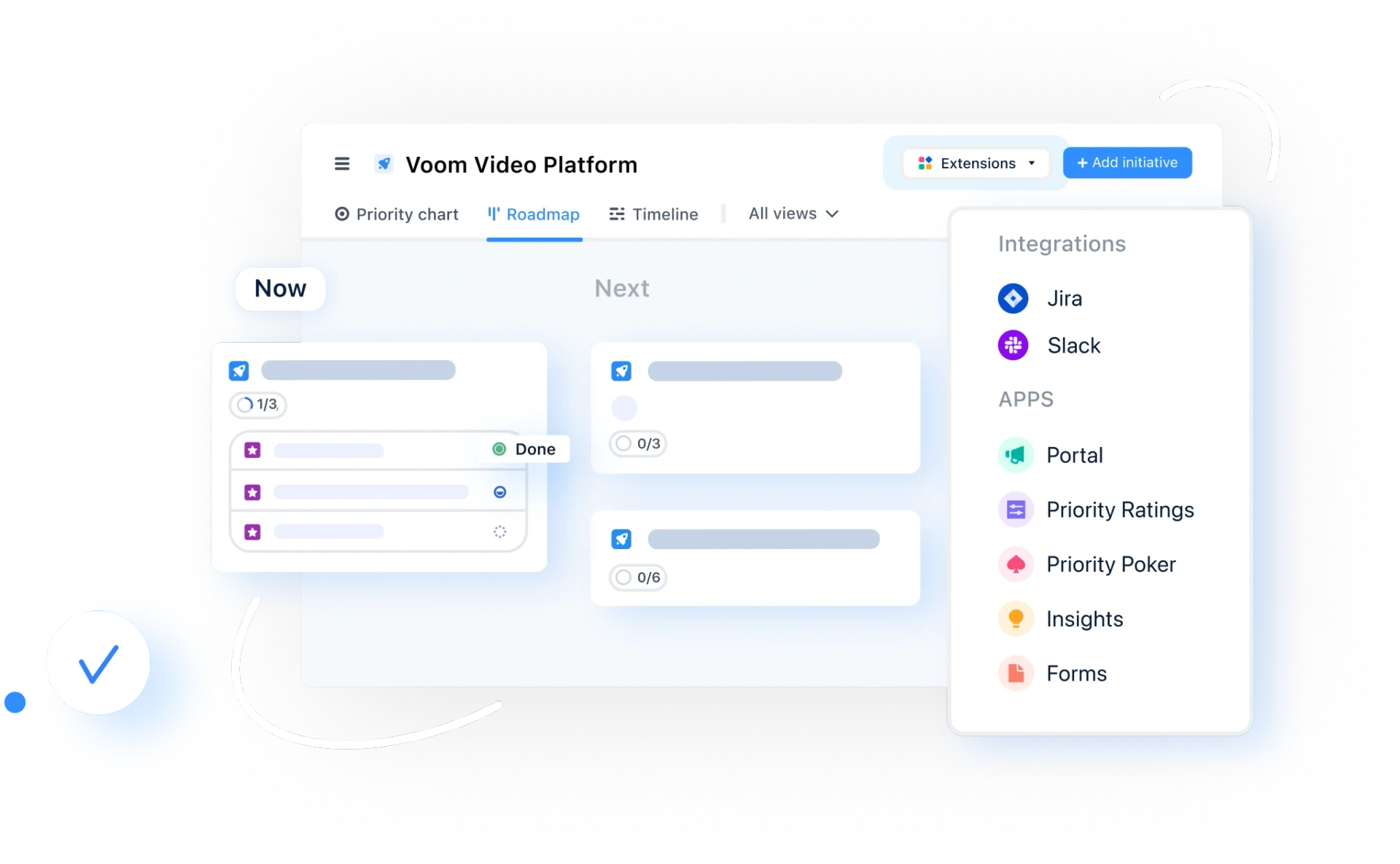Everything You Should Know About Product Owners, Product Operations, and Product Managers (Plus How To Tell Them Apart)

Trying to understand the difference between “product managers,” “product owners,” and “product operations” can be tough.
Each role is unique, which is why larger organizations will appoint someone to perform each position in a specialized capacity. Yet, smaller businesses often have a single person performing all three roles, which does little to ease the confusion.
So, what is the distinction? Why do some businesses get on just fine with one person performing all three roles while others need a team?
Let’s break down each position and the intricacies that set them apart.
Product managers
A product manager is responsible for the success of a product. They work at the intersection of top-level management, sales and distribution, product development, and quality assurance.
What does a product manager do?
The product manager (PM) instructs their team on the steps needed to deliver the best possible product to the market.
They share responsibility with the entire development team, including engineers, testers, designers, and stakeholders.
A PM will have a strong vision for the product and is personally invested in the long-term results. They need to set the direction of the product and take charge of important decision-making processes to ensure the product achieves that goal.
The PM is responsible for setting the pace of development. They need to determine feasibility, detect dependencies, define requirements, prioritize, create roadmaps and ensure developers stay aligned with the product goal. Crucially, they need to consult with the development team regularly to make sure they have the time and resources they need to perform their work in a way that adds value to the product.
What makes a good product manager?
A good product manager will understand customer requirements and how the product will compete in the market. They’ll use these insights to guide strategy and improve the product’s performance to put it on the right track.
As their decisions substantially impact the way the team works and can affect the project's outcome, product managers need to be confident in their choices. To ensure they make the right decision, product managers need to proactively monitor and respond to the ever-changing market and customer needs.
A great product manager will be proactive, decisive, confident, and able to communicate and inspire their teams.
Product owners
Product owners (PO) are responsible for increasing the value of a product by overseeing tasks according to the product vision. Combining the role of a product owner with product manager can lead to a conflict of interest because the PO role is a mediator position rather than being hands-on like a PM.
What does a product owner do?
Within Agile’s Scrum framework, product owners are tasked with clarifying and priortizing product backlog items. A great product owner will have great collaboration skills and will focus on team integration.
Essentially, a PO acts as an intermediary between the development team, stakeholders, and customers.
Product owners also define requirements and prioritize assignments across multiple teams to ensure each project takes the desires and needs of the customer into account.

Which responsibilities belong to product owners?
A great PO needs to have strong communication and multitasking abilities and key product management skills. As an overseer, a PO is responsible for clarifying product backlog items with the development team and ensuring the product provides maximum value to customers.
Product owners are accountable for the product’s return on investment (ROI). They need to verify the quality of any executed task, and as such, they have final say on any decision within the software development process.
How can you become a product owner?
Product owners often need to draw on skills that are normally associated with product management. This is part of why the two roles sometimes blend into one singular role in smaller businesses.
Often, as businesses grow, the two roles become separate again. This usually leads to product managers taking over the newly created product owner role. The best way to become a product owner is to prove your mettle as a product manager and ensure your name stays in the mix for future product owner positions.
Product operations
Product operations (product ops) is an increasingly crucial role as companies make data-driven decisions to address customer needs.
What does product operations do?
Product ops are responsible for managing relevant data and technology. They are also tasked with facilitating user tests, product experimentation, and team collaboration.
To do this, product ops develop strategies for best practices when it comes to the tools and data-driven product management process. They work on behind-the-scenes initiatives in an effort to empower the product team. Like product managers, product ops are able to jump into the development process to assist the team when needed. So they need a great deal of knowledge when it comes to development processes and need to maintain proper documentation.

Why is product ops a more important role than ever?
The business world is more competitive than ever, and those who wish to stay afloat need to stay laser-focused on emerging trends and changing customer needs. This is why the product ops role has seen a sharp uptick in attention.
Product operations make it easier to develop and release product updates that offer additional value to the customer. They handle many of the logistics, documentation, and data-driven tasks, leaving the development team to focus on building the best product they can.
How airfocus can help each and every one of them
When discussing the role of PO vs. PM vs. P Ops, we need to remember that they’re all working towards a common goal — releasing products of the highest quality that suit the target audience, and ensuring that this quality remains throughout the product’s lifespan.
To make this happen, companies must support their product teams with the best tools available. Finding the most effective, user-friendly tools for POs, PMs, and Product Ops can help teams achieve their goals more efficiently.
That’s where airfocus comes in. airfocus is a home for product management professionals, with everything you need in one place. Whether you’re a product owner, product manager, or product operations specialist, airfocus is a fantastic addition to your tool stack.
Here are some of the key features you’ll find in airfocus:
Multiple integrations
airfocus provides product teams with two-way integrations for an extensive range of tools, including:
Jira
Asana
Trello
Microsoft Planner
GitHub
Webhooks
Zapier
Slack
Salesforce
Zendesk
With these integrations, you can centralize the key data and tools you need daily.
Modularity
airfocus is modular by design, so it can be configured to fit the specific requirements of various roles, teams, and products. It includes ready-to-use templates for quick, easy setup, and you can keep extending your configuration as you scale.
Native apps include Priority Ratings, Forms (for customizable forms), and Priority Poker (to make team collaboration and feature prioritization fun). You can choose from multiple custom views to visualize data, from Gantt and Chart to Timeline. With airfocus you have access to all the tools and features you need.
Advanced features including AI Assist
airfocus includes AI Assist, a cutting-edge option created to help Product Managers, Product Owners, and Product Operations get more out of their time. With help from the latest AI technology, you can boost your productivity with a fast setup, access powerful prompts, and analyze feedback.
Slash commands help PMs start generating first drafts to avoid dreaded creative blocks. Plus, prompts make writing user stories or product requirement documents easier than ever.
Convenient product roadmapping
Using airfocus’ product roadmap software is ideal for conveying product vision to teams. It includes a user-friendly roadmap builder with diverse formats and customization options to explore.
Product prioritization
Prioritization is simpler than ever for product teams with the airfocus Prioritization tool. Custom scoring frameworks, visualization, and built-in custom workflows all facilitate at-a-glance insights into priority tasks. Using the Product Prioritization tool can help PMs, POs, and Product Ops make smarter product decisions.

Tomas Prochazka

Read also





Experience the new way of doing product management

Experience the new way of doing product management



